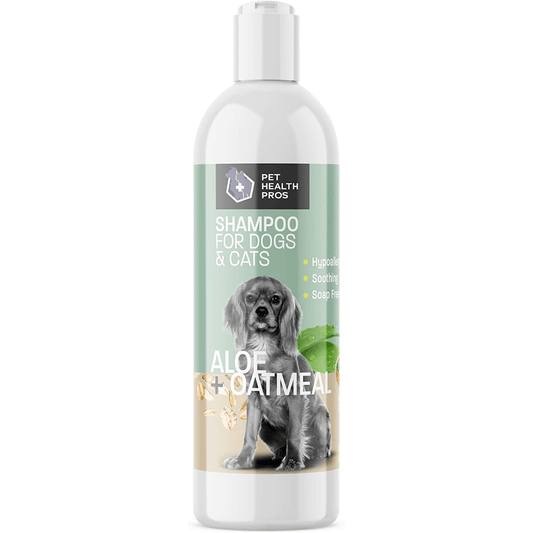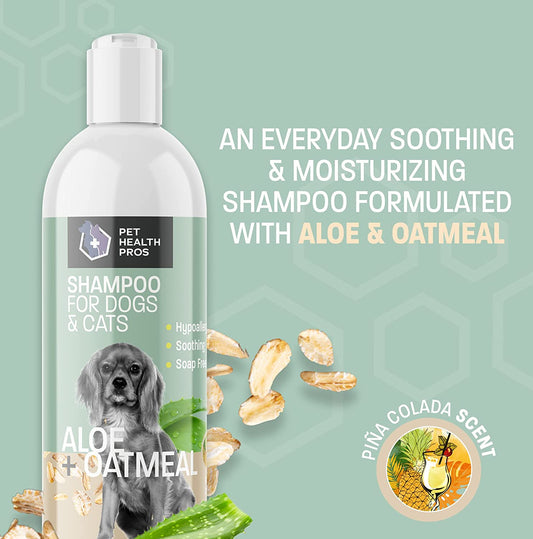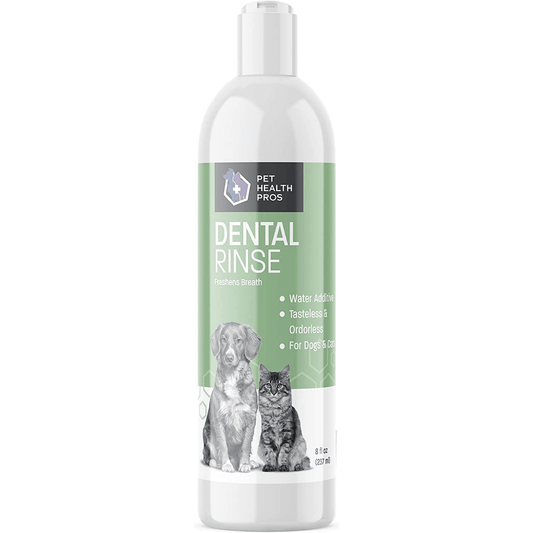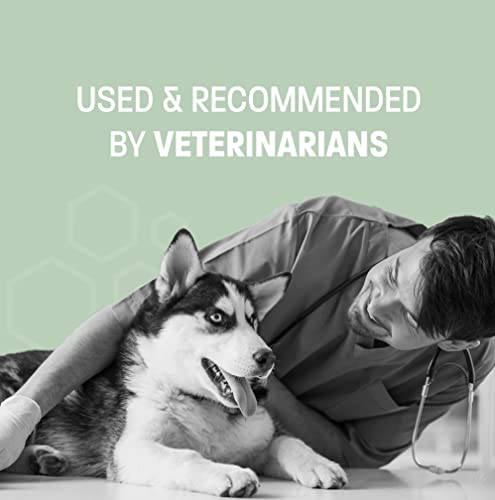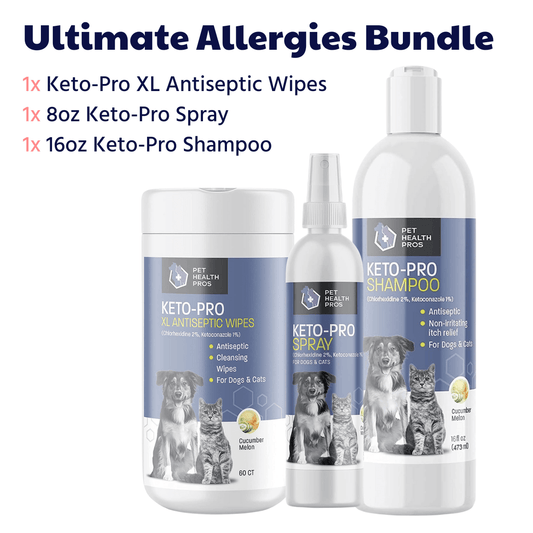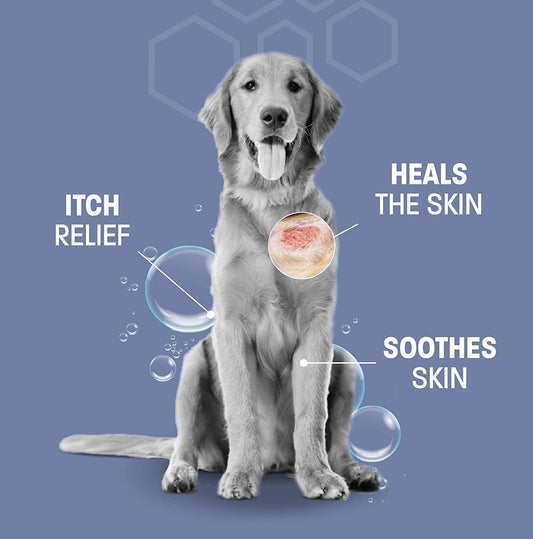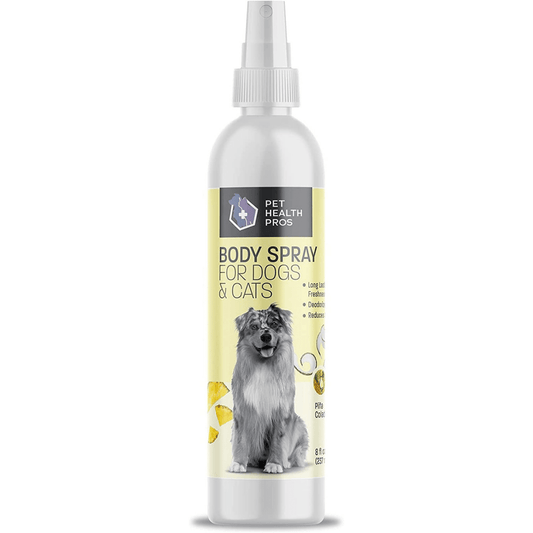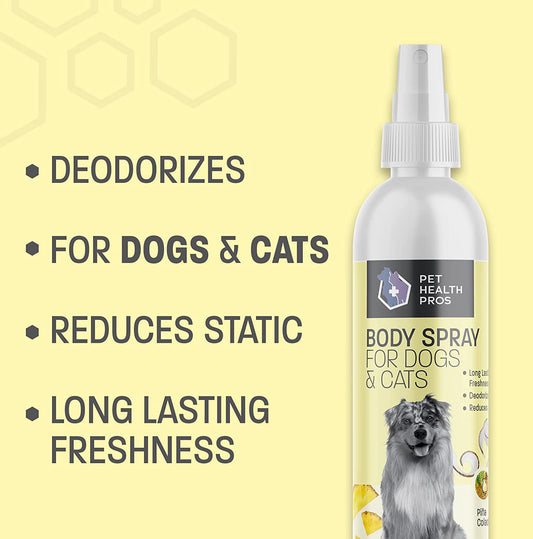If you're a dog owner, you might have noticed your furry friend chewing on everything in sight. This behavior can be frustrating and even harmful. Fortunately, you can create your own no chew spray for dogs DIY to help deter this habit. In this guide, you'll learn why dogs chew, how to make your own spray, and tips for applying it effectively.
Key Takeaways
- No chew spray helps stop dogs from chewing on furniture and other items.
- Using natural ingredients is safer for your dog and the environment.
- It's important to apply the spray consistently for the best results.
- Training your dog alongside using the spray can be very effective.
- If the spray doesn't work, consider adjusting the formula or seeking professional help.
Understanding the Need for No Chew Spray
Why Dogs Chew on Things
Dogs are naturally curious creatures, and they often explore their world through chewing. This behavior can stem from several reasons:
- Teething: Puppies may chew to relieve discomfort from their growing teeth.
- Boredom: Dogs left alone for long periods may chew to entertain themselves.
- Anxiety: Some dogs chew when they feel stressed or anxious.
The Risks of Chewing for Dogs
While chewing is a normal behavior, it can lead to several risks:
- Injury: Chewing on inappropriate items can cause cuts or broken teeth.
- Toxicity: Some household items, like electrical cords or certain plants, can be harmful if ingested.
- Destruction: Chewing can lead to damage in your home, resulting in costly repairs.
Benefits of Using No Chew Spray
Using a no chew spray can help manage your dog's chewing habits effectively. Here are some benefits:
- Deterrent: The unpleasant taste discourages dogs from chewing on furniture or other items.
- Safe: Many no chew sprays are made from natural ingredients, making them safe for pets.
- Cost-effective: Creating a DIY no chew spray can be a budget-friendly solution compared to buying commercial products.
In summary, understanding why dogs chew and the potential risks involved is crucial for pet owners. By using no chew spray, you can protect your belongings while ensuring your dog's safety and well-being.
This simple guide will help you create an effective no chew spray that can keep your dog from harmful chewing habits. Remember, consulting a vet is always a good idea when trying new products on your pet.
Essential Ingredients for DIY No Chew Spray
Creating a no chew spray for your dog can be a simple and effective solution to prevent unwanted chewing. Here are some essential ingredients to consider:
Natural Ingredients to Consider
- Bitter Apple Spray: A common deterrent that has a strong taste that dogs dislike.
- Vinegar: Its strong smell can help keep dogs away from certain areas.
- Citrus Juice: Many dogs find the scent of citrus unpleasant.
Safety Precautions When Choosing Ingredients
When selecting ingredients for your no chew spray, keep these safety tips in mind:
- Always use natural ingredients to avoid harmful chemicals.
- Test a small area first to ensure your dog does not have an allergic reaction.
- Avoid ingredients that are toxic to dogs, such as essential oils like tea tree oil.
Where to Source Ingredients
You can find the ingredients for your DIY no chew spray at:
- Local grocery stores
- Health food stores
- Online retailers specializing in pet products
Remember: Combining no chew spray with behavioral solutions can lead to lasting results in managing your dog's chewing habits.
By using the right ingredients and following safety precautions, you can create an effective no chew spray that helps protect your belongings while keeping your dog safe.
Step-by-Step Guide to Making No Chew Spray
Gathering Your Materials
To create your own no chew spray, you will need a few simple materials. Here’s a list to help you get started:
- Spray bottle (preferably glass or high-quality plastic)
- Bitter tasting ingredients (like apple cider vinegar or lemon juice)
- Water
Mixing the Ingredients
Once you have your materials, it’s time to mix them. Follow these steps:
- Start with 1 cup of water in your spray bottle.
- Add 1/2 cup of your chosen bitter ingredient.
- Shake well to combine the ingredients thoroughly.
Tip: You can adjust the ratio based on your dog's reaction to the spray.
Proper Storage of the Spray
After mixing, store your no chew spray properly to maintain its effectiveness. Here are some tips:
- Keep it in a cool, dark place.
- Label the bottle clearly to avoid confusion.
- Shake well before each use to ensure the ingredients mix properly.
Remember, using no chew spray is just one part of training your dog. Consistency is key!
How to Effectively Apply No Chew Spray
Identifying Problem Areas
To successfully use no chew spray, you first need to find out where your dog is chewing the most. Here are some common areas to check:
- Furniture legs
- Shoes and bags
- Electrical cords
- Baseboards and walls
Identifying these spots is crucial for effective application.
Techniques for Applying the Spray
When applying the no chew spray, consider the following techniques to ensure it works well:
- Spray directly on the item your dog tends to chew.
- Apply a light mist rather than soaking the area.
- Reapply after cleaning or if the scent fades.
Frequency of Application
The effectiveness of no chew spray can depend on how often you apply it. Here’s a simple schedule:
- Daily for the first week
- Every other day for the second week
- Weekly after that, or as needed
Regular application helps reinforce the message to your dog that certain items are off-limits.
Tips for Training Your Dog Alongside Using No Chew Spray
Positive Reinforcement Techniques
Using positive reinforcement is a great way to train your dog while using no chew spray. Here are some effective methods:
- Reward good behavior: Whenever your dog chooses to chew on their toys instead of furniture, give them a treat or praise.
- Use clicker training: A clicker can help mark the exact moment your dog does something right, making it easier for them to learn.
- Create a routine: Consistency helps dogs understand what is expected of them.
Consistency in Training
Consistency is key when training your dog. Here are some tips to maintain consistency:
- Use the same commands: Always use the same words for commands to avoid confusing your dog.
- Involve all family members: Make sure everyone in your household uses the same training techniques.
- Set clear boundaries: Be firm about what is acceptable for your dog to chew on.
Monitoring Your Dog's Progress
Keep track of your dog's progress to see how well they are responding to the no chew spray and training:
- Observe behavior changes: Note any improvements in your dog's chewing habits.
- Adjust training methods: If something isn’t working, don’t hesitate to try a different approach.
- Be patient: Training takes time, and every dog learns at their own pace.
Remember, training your dog is a journey that requires patience and understanding. Celebrate small victories along the way!
Troubleshooting Common Issues with No Chew Spray
When the Spray Doesn't Work
If your no chew spray isn't stopping your dog from chewing, consider the following:
- Check the application: Ensure you are applying the spray directly to the areas your dog tends to chew.
- Reapply frequently: The effectiveness can wear off, so reapply as needed.
- Evaluate the formula: Some dogs may not be deterred by certain ingredients.
Adjusting the Formula
If the spray isn't effective, you might need to tweak the ingredients. Here are some suggestions:
- Increase the concentration of bitter ingredients.
- Add new deterrents like vinegar or citrus.
- Test different combinations to find what works best for your dog.
Consulting a Professional
If you continue to face issues, it may be time to seek help:
- Veterinarian: They can provide insights on your dog's behavior and health.
- Dog trainer: A professional can offer training tips to reduce chewing.
- Pet behaviorist: They can help identify underlying issues that may be causing the chewing.
Remember, patience is key when training your dog. It may take time for them to learn what is acceptable to chew.
Exploring Alternatives to No Chew Spray
When it comes to preventing dogs from chewing on unwanted items, there are several alternatives to no chew spray that can be effective. Understanding these options can help you choose the best method for your dog.
Other Deterrent Methods
- Bitter Tasting Sprays: Similar to no chew sprays, these products are designed to taste unpleasant to dogs, discouraging them from chewing.
- Physical Barriers: Using baby gates or crates can help keep your dog away from areas where they might chew on furniture or other items.
- Chew Toys: Providing your dog with appropriate chew toys can redirect their chewing behavior to something safe and enjoyable.
Behavioral Training Options
- Redirecting Attention: When you catch your dog chewing on something they shouldn’t, redirect their attention to a toy or a different activity.
- Positive Reinforcement: Reward your dog when they chew on their toys instead of furniture. This encourages good behavior.
- Consistency: Be consistent in your training methods to help your dog understand what is acceptable to chew on.
Professional Help and Resources
If you find that your dog’s chewing is excessive or problematic, consider seeking help from a professional dog trainer or a veterinarian. They can provide tailored advice and strategies to address the issue effectively.
Remember, every dog is different, and what works for one may not work for another. It’s important to find the right approach for your pet’s unique needs.
By exploring these alternatives, you can help manage your dog’s chewing habits while ensuring their safety and well-being. Pet genius can also offer insights into your dog's health and behavior, providing additional support for pet owners.
If you're looking for other ways to keep your pet from chewing on things they shouldn't, there are plenty of options to consider. From natural deterrents to training techniques, you can find effective solutions that work for your furry friend. For more tips and products to help your pet, visit our website today!
Final Thoughts on Making No Chew Spray for Your Dog
Creating a no chew spray for your dog at home is a simple and effective way to protect your belongings while keeping your pet safe. By using natural ingredients, you can make a solution that helps deter your dog from chewing on furniture or other items. Remember to test the spray on a small area first to ensure it won’t damage your belongings. With a little effort, you can create a spray that not only keeps your dog from chewing but also promotes a happier and healthier environment for both of you.
Frequently Asked Questions
What is no chew spray for dogs?
No chew spray is a special liquid you can put on things to stop dogs from chewing on them. It usually has a bitter taste that dogs don't like.
How do I make no chew spray at home?
You can make no chew spray by mixing water with ingredients like vinegar or citrus juice, which dogs find unappealing.
Is no chew spray safe for dogs?
Yes, most homemade no chew sprays are safe if you use natural ingredients. Just make sure to avoid anything harmful.
How often should I apply no chew spray?
You should apply the no chew spray regularly, especially in areas where your dog likes to chew. Reapply it after cleaning the area.
What if my dog still chews after using the spray?
If your dog continues to chew, try changing the formula or using positive reinforcement to train them not to chew.
Are there alternatives to no chew spray?
Yes, you can use other methods like giving your dog chew toys, training them, or seeking help from a professional dog trainer.


